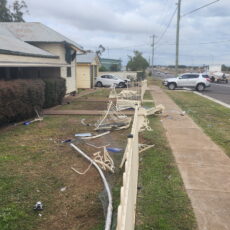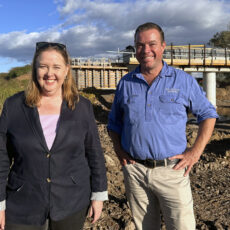The latest Bureau of Health Information (BHI) Healthcare Quarterly report (October – December 2022) shows Hunter New England Local Health District (HNELHD) maintained its steady performance despite record demand for high-level emergency care.
At Narrabri Hospital, 78.6 per cent of patients spent four hours or less in the emergency department, 86.5 per cent of patients’ treatment started on time and all patients (100 per cent) who arrived by ambulance were transferred into the care of emergency department staff within 30 minutes.
The hospital’s emergency department recorded 1414 attendances for the quarter, up slightly on the previous corresponding period.
Seven babies were born at the hospital during the quarter, down from 15 in the previous year.
HNELHD acting chief executive, Tracey McCosker, thanked staff for exceptional work during a busy time.
“In the final quarter of 2022, the district saw 114,904 attendances to emergency departments – the fourth highest number on record since BHI reporting began in 2010,” Ms McCosker said.
“We also saw increased numbers of patients with an imminently life-threatening condition. Of the almost 115,000 attendances to our EDs, 14,719 were in triage category two – which is a record high for Hunter New England Local Health District.”
Throughout the final quarter of 2022, the majority of patients (66.1 per cent) started their treatment on time, which is in line with the NSW average.
Despite the increased demand for high-level emergency care, the median time to start treatment for triage category 2 patients was eight minutes, an improvement on the preceding July to September 2022 quarter (9 minutes).
The district also performed above the state average of 75.8 per cent on transfer-of-care, with almost eight in 10 patients (78.5 per cent) transferred from ambulance to ED staff within the 30-minute benchmark.
Of the more than 111,000 presentations to EDs, 63,402 (57 percent) were in the semi-urgent (triage 4) and non-urgent (triage 5) categories.
“We aim to see every patient as quickly as possible, but the most seriously unwell patients are always treated first and those with less urgent conditions may face a wait, especially in busier times,” Ms McCosker said.
A total of 6631 elective surgeries were performed across the region, an increase (134 surgeries) on the preceding quarter, with almost all urgent elective surgeries (99.9 per cent) performed on time.
Between mid-2012 and mid-2022, Hunter New England Local Health District increased its workforce by an additional 1956 full time equivalent staff – an increase of 18.6 per cent, including 482 more doctors, 1042 more nurses and midwives, and 187 more allied health staff.
The 2022-23 budget for Hunter New England Local Health District is more than $2.66 billion, an increase of more than $103 million, or four per cent more, on the previous year’s budget.
Meanwhile, the NSW Nurses and Midwives’ Association (NSWNMA) said the new data, which showed more patients sought emergency treatment in the state’s public hospitals towards the end of 2022 than prior to the pandemic, was evidence for a reliable and enforceable nurse-to-patient ratios system to better manage demand on the hospital system.
“The NSW government’s complete lack of minimum ED staffing is not sustainable, and interventions are needed to ensure patients are treated promptly,” Association general secretary Shaye Candish said.
To order photos from this page click here










